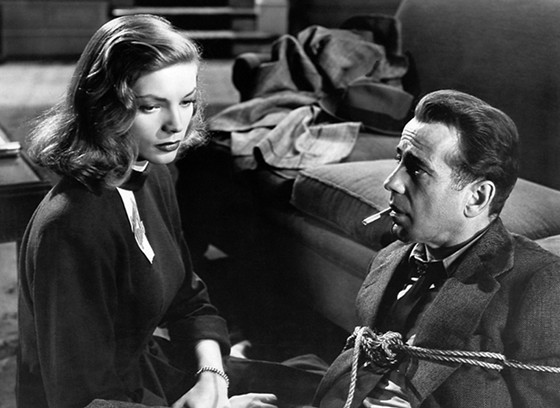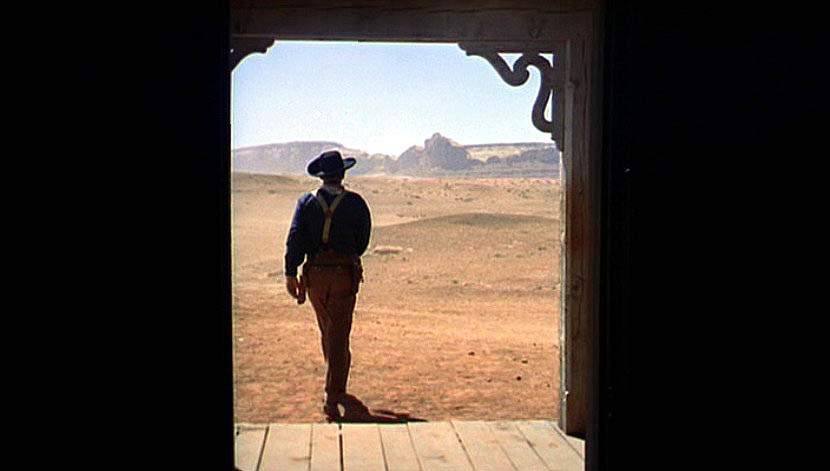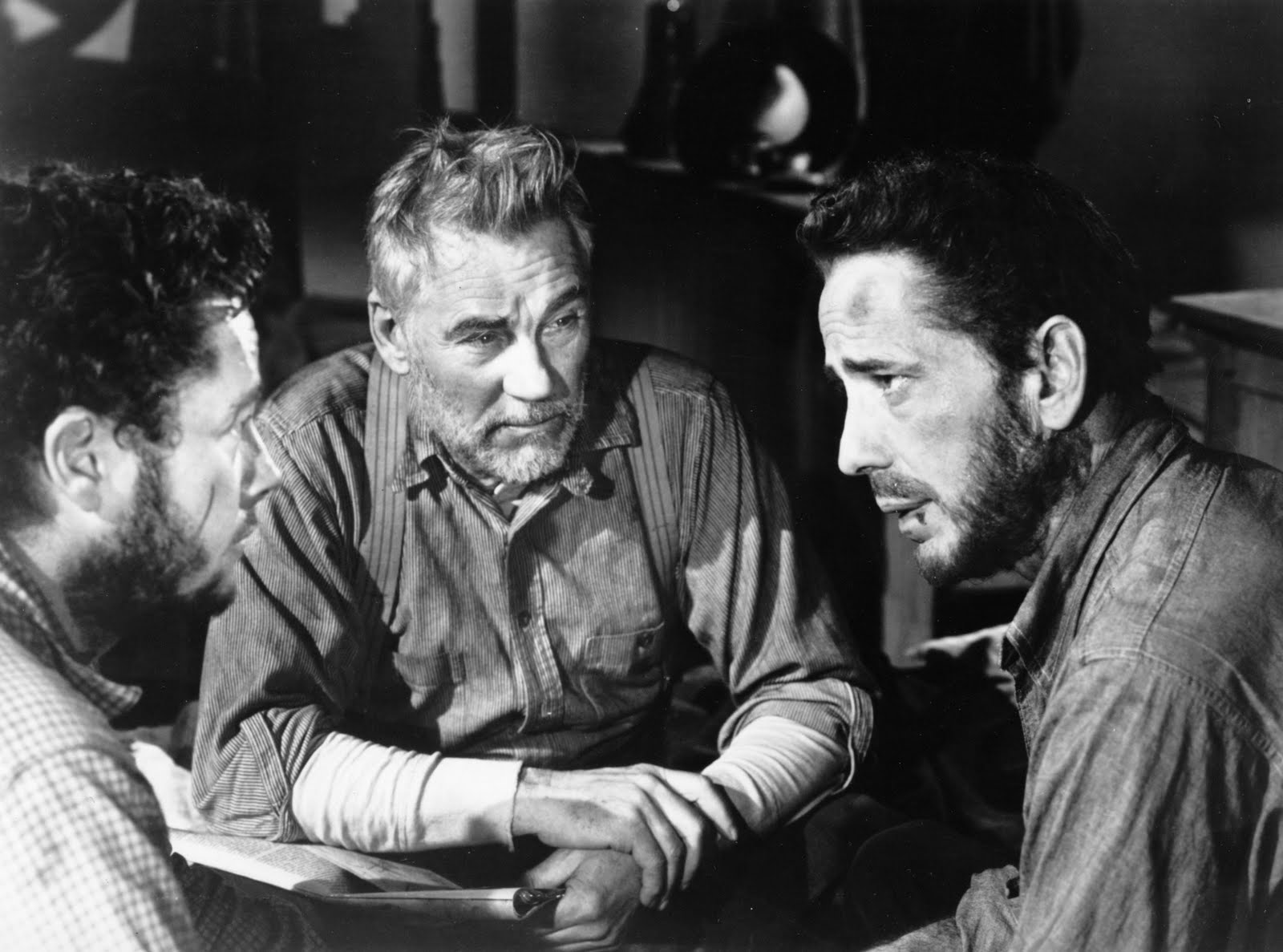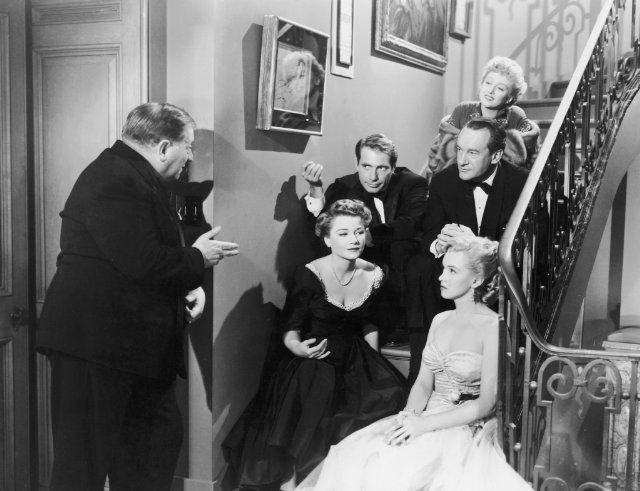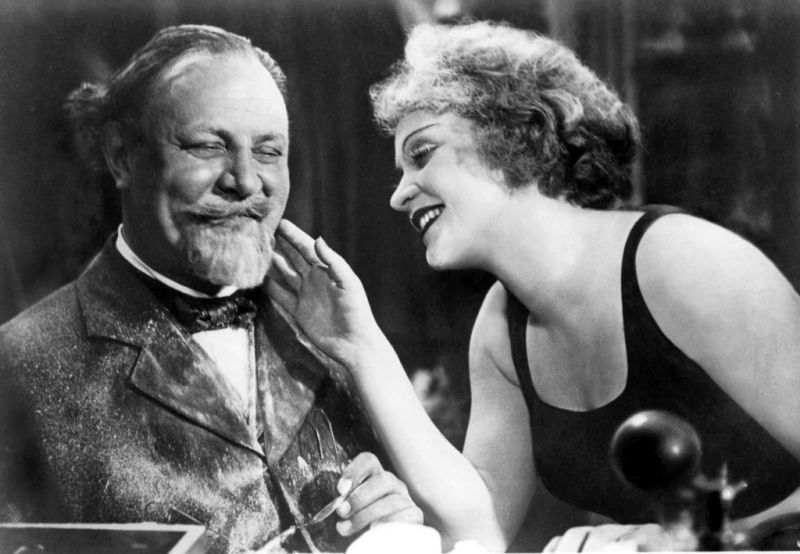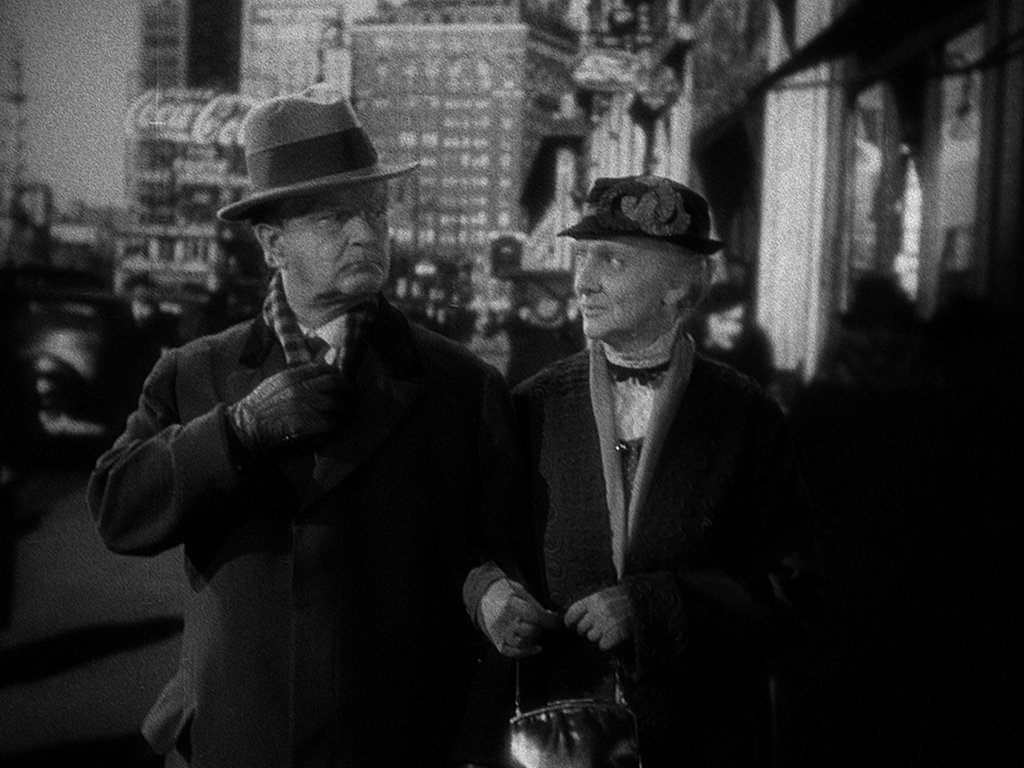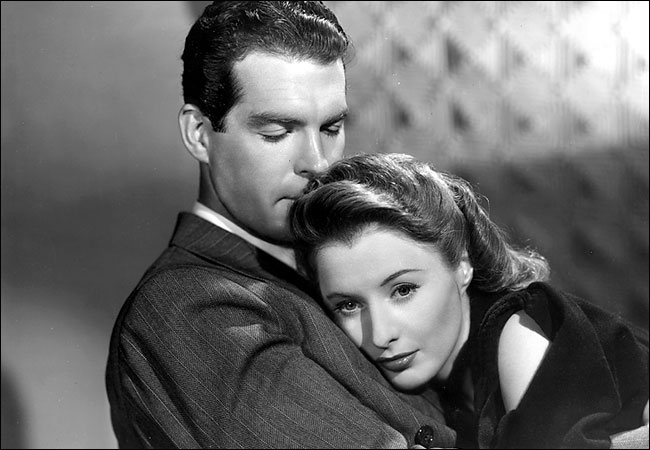11. George Stevens
Although not as well-known as the likes of John Ford and Frank Capra, Stevens in an indisputable artist of filmmaking, having produced extraordinary efforts in a wild variety of genres: Swing Time (1936), arguably the best of the Astaire/Rogers musicals; The More The Merrier, an exemplary screwball comedy; Gunga-Din, the earliest attempt at adventure flicks as we know them; A Place in the Sun, a brilliant literary adaptation and finally, the all-time western classic Shane.
Respected among his colleagues, Stevens enjoyed creative independence like very few directors of the Classic Film Era. Acting as a producer for a good part of his own films, he was able to pick material that went with his humanistic vision, regardless of their subject. From family dramas like 1948’s I Remember Mama, to spectacle epics, such as 1956’s Giant, Stevens left his personal mark to each story he brilliantly told.
12. Howard Hawks
Perhaps Hawks’ only ‘fault’ as a filmmaker was his enormous versatility. From gangster films like the original Scarface, to quintessential screwball comedies such as Bringing Up Baby and His Girl Friday, and from Adventure packed flicks like Only Angels have Wings to Westerns ( El Dorado) and Noirs ( The Big Sleep and To Have and Have Not), there probably isn’t a genre he didn’t touch. If to the contrary, Hawks had specialized in one theme, he might be a mainstream name like Alfred Hitchcock today.
In his active years, although respected by the film community, Hawks nearly boundless filmmaking talents were not very much appreciated. He was nominated only once as Best Director for the 1941 War biopic Sergeant York, an award he lost to friend John Ford. But thanks to the French critics from the famous ‘Cahiers du Cinema’, who started revisiting his work in the 1950’s, Hawks has since rightfully reached chief filmmaker status.
13. John Ford
Indisputably among the most revered American directors of all time, a good part of John Ford’s incredible 145 efforts in film-directing were in westerns. It should come as no surprise then, that the legendary filmmaker has become practically synonymous with the genre.
A young Jack Feeney came to Hollywood after his older brother Frank. In 1924, after having learned the trade with his actor/director sibling, he started going by John Ford and directed his first masterpiece: The Iron Horse.
The 1930’s brought Ford to 20th Century Fox, where he would produce some of his most acclaimed films such as The Grapes of Wrath, How Green was My Valley, and of course, 1939’s Stagecoach, the film that would revitalize westerns, make John Wayne a star and serve as a lesson in filmmaking to Orson Welles, before he embarked into filming Citizen Kane.
The Quiet Man, The Man Who Shot Liberty Valance and The Searchers are just a few other acclaimed titles to his credit. Ford would win and unparalleled four Academy Awards as best director and most importantly he would enter History as one of the men who virtually created American Film imagery.
14. John Huston
The son of famed character actor Walter Huston, John Huston, was an only child who grew up in the vaudeville stage. At 14, he quit school to become an amateur boxer, a meteoric career that won him a lightweight championship and a signature broken nose.
After working as a journalist, he took up screen-writing and, in 1941, had his directing debut in The Maltese Falcon; the inaugural installment in the American Film Noir phenomenon.
Alongside Humphrey Bogart, he would also make another quality Noir, 1948’s Key Largo; the quintessential tale of greed, The Treasure of Sierra Madre and the iconic The African Queen, which famously won Bogie his only Best Actor Oscar.
In over 50 years in the Industry, Huston would direct over 40 films, write for more than 20 and act in a handful, including Roman Polanski’s Chinatown.
15. Joseph L. Mankiewicz
Following in the footsteps of his elder brother, Citizen Kane writer Herman Mankiewicz, Joseph Mankiewicz also worked with screenplays for a good part of his career, having signed scripts for almost 50 productions.
His first shot at directing came in 1946, when Ernst Lubitsch fell ill during the shooting of Dragonwyck. Mankiewicz ended up directing 20 films in almost 30 years as a filmmaker, having found everlasting fame upon winning successive Directing and Screenwriting Oscars for A Letter to Three Wives (1949) and All About Eve (1950).
Mankiewicz triumphantly adapted Shakespeare (Julius Caesar) and Tennessee Williams (Suddenly, Last Summer) to the screen. He also ventured in supernatural romances (The Ghost and Mrs. Muir) and even Film Noir, with the acclaimed 5 fingers.
His monumental and problematic 1963 production of Cleopatra almost ruined his career and bankrupted Fox. Eventually both would recover: the studio with the success of 1965’s The Sound of Music and Mankiewicz, through his own hard work and talent. His final film was the famed thriller Sleuth.
16. Josef von Sternberg
Born Jonas Sternberg to an impoverished Viennese family, Sternberg would move to the US as a teenager. A high-school drop-out he entered the film business doing maintenance for old prints.
In 1925, he directed his debut feature, The Salvation Hunters, one of the first independent American films ever recorded. Legend has it, the “von” was added to his name to align the credits and he kept it as homage to Erich von Stroheim.
Ironically von Sternberg would have to go back to Europe to find success in talkies. In Germany, he discovered Marlene Dietrich and cast her as Lola in the international hit The Blue Angel. Their on and off-screen partnership would result in half a dozen more films, such as The Shanghai Express and Morocco.
Today, von Sternberg is mostly remembered by the visual opulence of his films and their exquisite cinematography. A visionary and a one-of-a-kind actress, Dietrich and Sternberg, formed one of the most celebrated actor-director duos of all time.
17. Leo McCarey
Born and raised Californian Leo McCarey had a Law degree from a respected University, but his good looks led him to try an acting career at Hollywood. In the late 1910’s, McCarey worked for director Tod Browning, who has been cited as the one responsible for his shift to behind-the-camera work in the 1920’s.
At Hal Roach Studios, McCarey created one of the most renowned funny duos of Film History while casting Stan Laurel and Oliver Hardy together. His creative peak came in the 1930’s with comedies like The Marx Brothers’ Duck Soup and the essential screwball The Awful Truth. At that decade, McCarey also made what would become one of his most critically acclaimed films, the family drama Make Way for Tomorrow.
The following years, the fervent catholic McCarey started producing films with a social message and a religious tone, among them the multiple Academy-Award-Winner Going My Way, and its sequel, The Bells of St. Mary’s.
As for his post-war work, after an initial negative response from the public, McCarey would resume his popularity with the remake of his 1939 classic Love Affair – retitled An Affair To Remember, a romance of timeless appeal that has become one of the most iconic Hollywood classics.
18. Michael Curtiz
When one thinks of what makes Casablanca great, they might mention its great dialogue, perhaps its main theme or even Humphrey Bogart’s charm. Funny enough, one seldom hears praise for its director, Hungarian born Michael Curtiz.
Like a good part of his peers, Curtiz’s style was discreet: his directing was efficient and his camera work did not call attention to itself – a perfect fit for the classical narratives of Old Hollywood, but a discredit for the famed French critical movement of the 1950’s, which commonly let aside directors with adaptable talents in favor of those who perfected a single theme.
During WB’s prime decades, the 1930’s and 1940’s, Curtiz’s career flourished. In his more than 100 films in Hollywood, he enjoyed successes in every genre one can think of. He was behind such gems as The Adventures of Robin Hood, Angels with Dirty Faces, Yankee Doodle Dandy, Mildred Pierce, and White Christmas, to mention only a few. Although, he will never be as famous as the likes of Wilder and Hitchcock, his reputation has slowly been growing with time and his enormous body of work is available to those who wish to discover a competent if not flashy talent of the Golden Age.
19. Mitchell Leissen
Definitely one of the most underrated filmmakers of the Classical Hollywood period, Mitchell Leissen started in the Industry in the art department, even scoring an Oscar nomination for his work in Cecil B. DeMille’s Dynamite. Soon, his keen eye for beautiful compositions and aesthetics led him to directing.
He was most apt in melodramas and screwball comedies, a good part of those scripted by either Billy Wilder or Preston Sturges. At his studio, Paramount Pictures, Leissen became the most dependable contract director, steadily releasing box-office hits such as Murder at the Vanities, Hold Back the Dawn and Midnight.
Leissen’s elegance and sense of humor are his trademarks and so is his particular talent to direct actresses. Leading ladies Jean Arthur (Easy Living), Barbara Stanwyck (Remember the Night) and Paulette Goddard (Hold back the Dawn) all delivered some of their best performances under Leissen’s guidance, and so did Olivia de Havilland, who won an Oscar for the director’s 1947 drama To Each his Own.
20. Nicholas Ray
Underappreciated by the American film critics of his time, Nicholas Ray was elevated to major filmmaker status by the young French writers from Cahier du Cinéma – Jean Luc Godard famously called Ray Cinema at its purest form.
Ray’s debut in screen-directing was in 1948’s They Live By Night, a film François Truffaut pointed as his best. The semi-Noir tells of two young lovers running from the law – a plot that would influence many groundbreaking productions such as Gun Crazy and Bonnie and Clyde. The director’s empathy for young society outsiders was also the theme for perhaps his most famous film – James Dean’s second starring vehicle Rebel without a Cause.
Ray also directed the famed metaphorical Western Johnny Guitar and the pivotal Film Noir In a Lonely Place, before his addiction to drugs and alcohol sadly diverted him from Hollywood in the 1960’s.

